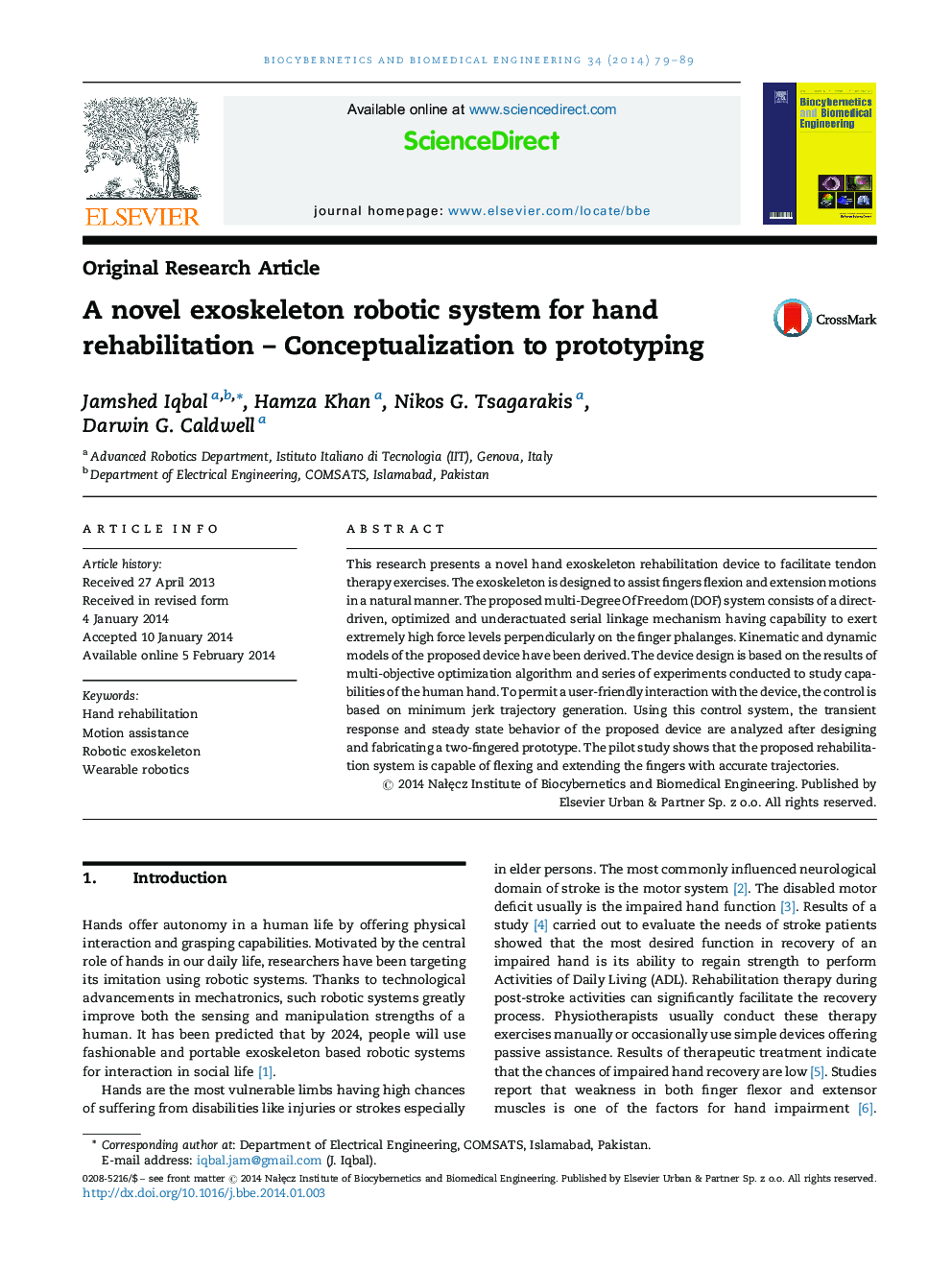| Article ID | Journal | Published Year | Pages | File Type |
|---|---|---|---|---|
| 5191 | Biocybernetics and Biomedical Engineering | 2014 | 11 Pages |
This research presents a novel hand exoskeleton rehabilitation device to facilitate tendon therapy exercises. The exoskeleton is designed to assist fingers flexion and extension motions in a natural manner. The proposed multi-Degree Of Freedom (DOF) system consists of a direct-driven, optimized and underactuated serial linkage mechanism having capability to exert extremely high force levels perpendicularly on the finger phalanges. Kinematic and dynamic models of the proposed device have been derived. The device design is based on the results of multi-objective optimization algorithm and series of experiments conducted to study capabilities of the human hand. To permit a user-friendly interaction with the device, the control is based on minimum jerk trajectory generation. Using this control system, the transient response and steady state behavior of the proposed device are analyzed after designing and fabricating a two-fingered prototype. The pilot study shows that the proposed rehabilitation system is capable of flexing and extending the fingers with accurate trajectories.
